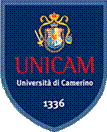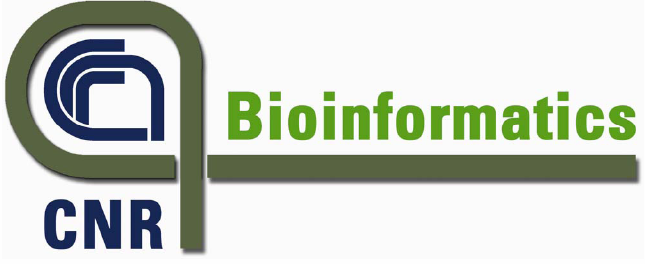
|

|

|

|

|

|

|
NETTAB 2007 focused on: A Semantic Web for Bioinformatics: Goals, Tools, Systems, Applications June 12-15, 2007, University of Pisa, Italy |
||||
Scientific Programme Overview
NETTAB 2007 workshop intends to focus on the Semantic Web, as it is defined in the action statements of the WorldWideWeb Consortium (W3C) (see http://www.w3.org/2001/sw/) and in its possible uses in bioinformatics. It therefore aims at:
- introducing the basic knowledge of related standards and technologies, in a non trivial way through invited lectures
- outlining the promising features of the semantic web in bioinformatics through invited lectures and open discussion
- showing some valuable examples in bioinformatics through invited lectures, oral communications and posters
- allowing for as much discussion as possible through open discussions and a panel discussion
- demonstrating "how it works" practically through tutorials
For these reasons, the workshop will include:
- invited lectures on technological issues, perspectives and examples in bioinformatics
- oral communications on applications, tools and examples in bioinformatics
- a panel discussion on perspectives of the Semantic Web in bioinformatics
- a poster session
- tutorials, both on implementation of tools and technologies and on the best practice in bioinformatics
Invited Lectures
- Opening lecture: Pathway Commons: A public library of biological pathways on the semantic web
Gary Bader, University of Toronto, Canada
Gary D. Bader works on biological network analysis and pathway information resources as an Assistant Professor at the Terrence Donnelly Centre for Cellular and Biomolecular Research (CCBR) at the University of Toronto.
He recently completed post-doctoral work in the group of Chris Sander in the Computational Biology Center (cBio) at Memorial Sloan-Kettering Cancer Center in New York. Gary developed the Biomolecular Interaction Network Database (BIND) during his Ph.D. in the lab of Christopher Hogue in the Department of Biochemistry at the University of Toronto and the Samuel Lunenfeld Research Institute at Mount Sinai Hospital in Toronto. He completed a B.Sc. in Biochemistry at McGill University in Montreal.
Biological pathways represent knowledge about molecules, processes and their interactions, the cellular wiring diagram. Biological researchers use pathway maps to design and analyze experiments and to make predictions about the behavior of biological systems. Pathway information is, unfortunately, extremely difficult for biologists to use in its current fragmented and incomplete state. This roadblock to biological research can be overcome by developing the Pathway Commons Research Resource. Pathway Commons benefits researchers as a convenient single point of access to diverse biological pathway information from public sources, translated to the common BioPAX data language.
- The Semantic Web for Health Care and Life Science Interest Group and its Goals
Eric Neumann, Teranode Co., USA, and Chair of the Health Care & Life Science Interest Group, W3C
Eric K. Neumann is a Senior Strategist for Teranode Corporation, a company developing next generation systems for pharmaceutical companies. He is also founder and co-chair for the W3C Semantic Web Healthcare and Life Science Interest Group (HCLSIG) that is bringing together industry leaders to identify domain-specific applications that will benefit from semantic web technologies. He has also formed the Clinical Semantics Group, a consultancy group specializing in the development of intelligent applications for clinical trials informatics. Prior to this, Dr. Neumann was Global Head of Knowledge Management for Scientific and Medical Affairs within Sanofi-Aventis, covering all of global R&D. While in that position, he had developed BioDash, the first Drug Discovery Semantic Web dashboard. Dr. Neumann has also held executive positions at Beyond Genomics, 3rd Millenium, and Netgenics, and was an NSF-funded researcher for 6 years while at and Bolt, Beranek, and Newman. Dr. Neumann is an expert in knowledge-based methods for the pharmaceutical industry, and has been in the biotechnology industries for the past 16 years.
Topics of this talk will include: i) The Vision for the communities, ii) The group's Scope and Participants, iii) Current Activities and Demonstrations: Data Aggregation, Science Collaborations, and Knowledge Mining
- Publishing ontologies on the Web
Guus Schreiber, University of Amsterdam, The Netherlands
Guus Schreiber is a professor of Intelligent Information Systems at the Free University Amsterdam. He acts as chair of the W3C Semantic Web Deployment Working Group and was former chair of W3C's Web Ontology Working Group. He is also Scientific Director of the IST Network of Excellence "Knowledge Web". His research projects focus on semantic annotation and search within large virtual collections, in particular in the cultural-heritage field. or more information see http://www.cs.vu.nl/~guus/.
This talk will discuss ongoing activities within the W3C Semantic Web Deployment (SWD) Working. The group is currently working on a recommendation for SKOS, which will simplify the RDF/OWL representation of ontologies. SWD is also working on recipes for publishing ontologies on the Web and on "actual-practice" guidelines for ontology maintenance. Recent work on RDFa, which enables embedding of RDF in HTML will also be addressed.
- Bio-ontologies: The cream in the Semantic Web layer cake
Olivier Bodenreider, National Library of Medicine, USA
Olivier Bodenreider is a Staff Scientist in the Cognitive Science Branch of the Lister Hill National Center for Biomedical Communications at the U.S. National Library of Medicine. His research interests include terminology, knowledge representation and ontology in the biomedical domain, both from a theoretical perspective and in their application to natural language understanding, reasoning, information visualization and integration.
Dr. Bodenreider is a Fellow of the American College of Medical Informatics. He received a M.D. degree from the University of Strasbourg, France in 1990 and a Ph.D. in Medical Informatics from the University of Nancy, France in 1993. Before joining NLM in 1996, he was an assistant professor for Biostatistics and Medical Informatics at the University of Nancy, France, Medical School.
In this lecture, Olivier Bodenreider will show that ontologies hold the Semantic Web together, and will present examples taken from biomedicine.
- Sealife: A Semantic Grid Browser for the Life Sciences Applied to the Study of Infectious Diseases
Michael Schroeder, Biotechnological Centre, Technische Universität Dresden, Germany,
Albert Burgea, School of Mathematical and Computer Sciences, Heriot-Watt University, Scotland, UK, and
Robert Stevens, School of Computer Sciences, Manchester University, UK,
Michael Schroeder is a professor of bioinformatics at the Techical University Dresden, Germany. His group works on protein interactions extracted from literature and 3D protein structures. He developed an ontology-based literature search engine, GoPubMed, which is an example of a semantic web application. He also is coordinator of the bioinformatics group of the REWERSE project which develops rule-based approaches for the semantic web.
Albert Burger is a Bioinformatics Research Scientist with the MRC Human Genetics Unit in Edinburgh and Senior Lecturer in Computer Science at Heriot-Watt University. He is a member of the Database Group and the Image Systems Engineering Laboratory (ISEL). His current research interests include: Bioinformatics, Ontologies, Knowledge Representation and Evolutionary Computing.
Robert Stevens received an honours degree in biochemistry from Bristol; an M.Sc. in computational biology from York and a D.Phil. in computer science from York. He is currently a lecturer in bioinformatics within the BioHealth Informatics Group of the School of Computer Science at the University of Manchester. Principal research interests are in knowledge representation within biology and the use of Human Computer Interaction methods to improve the usability of bioinformatics tools. He is involved in projects such as Tambis, Gong, myGrid, which focus on the integration of distributed biomedical information using grid-technologies and ontologies.
The idea behind the Sealife project is to build a browser, which uses ontologies and text-mining to link bioinformatics services to relevant entities on the fly.
Detailed Scientific Programme
| Tuesday June 12, 2007 | |
| 09.00 - 19.00 | Registration and poster hang up |
| 09.00 - 11.00 |
Tutorial T1 RDF standard and technologies Heiko Stoermer, Dept of Information and Communication Technologies, University of Trento, Italy |
| 11.00 - 11.15 | Coffee break |
| 11.15 - 12.45 |
Tutorial T2 Modelling Biological Knowledge in OWL Georgina Moulton and Robert Stevens, University of Manchester, UK |
| 12.45 - 14.00 | Time for free lunch |
| 14.00 - 15.30 |
Tutorial T3 BioPAX: OWL based biological pathway exchange format Gary Bader, University of Toronto, Canada |
| 15.30 - 15.45 | Break |
| 15.45 - 17.15 |
Tutorial T4 Reasoning on ontologies - How to use Protégé and RacerPro together Maurizio Iacovella, Epistematica, Italy |
| 17.15 - 17.30 | Coffee break |
| 17.30 - 19.00 |
Tutorial T5 The Unified Medical Language System (UMLS) and the Semantic Web Olivier Bodenreider, National Library of Medicine, USA |
| Wednesday June 13, 2007 | |
| 09.15 - 10.45 |
Opening Session
Welcome Marco Pasquali, Dean of Pisa University Giorgio Levi, Director Departmentt of Computer Science, University of Pisa Roberto Marangoni, Chair Local Organizing Committee, Computer Science Department, University of Pisa Introduction to workshop's aims and structure Paolo Romano, National Cancer Research Institute, Genoa, Italy, Michael Schroeder, Biotec TU Dresden, Germany, Oreste Signore, ISTI, National Research Council, Pisa, Italy, Nicola Cannata, Computer Science Department, University of Camerino, Italy Opening Lecture
|
| 10.45 - 11.15 | Coffee break |
| 11.15 - 13.00 |
Focus Session 1: Goals of the Semantic Web in Bioinformatics
Oral communications
|
| 13.00 - 14.30 | Free time for lunch |
| 14.30 - 16.00 |
General Theme Session 1: From Components to Processes in Bioinformatics
Oral communications
|
| 16.00 - 16.30 | Coffee break |
| 16.30 - 18.00 |
Adjunct Theme Session 1: Algorithms in Bioinformatics
Invited Lecture
|
| 18.00 - 19.00 |
Flash posters session
Short presentations of up to 10 posters, 5' each |
| Thursday June 14, 2007 | |
| 09.00 - 10.30 |
General Theme Session 2: Network Tools and Applications in Biology
Oral communications
|
| 10.30 - 10.50 | Coffee break |
| 10.50 - 13.00 |
Focus Session 2: Semantic Web Technologies and Tools
Invited Lecture
|
| 13.00 - 14.30 | Free time for lunch |
| 14.30 - 16.00 |
Adjunct Theme Session 2: Formal Methods for Systems Biology
Invited Lecture
|
| 16.00 - 16.30 | Coffee break |
| 16.30 - 18.30 |
Posters' session (including the following software demo)
|
| 18.30 - 19.30 | Social activity (to be defined) |
| 20.30 - 22.30 | Social Dinner |
| Friday June 15, 2007 | |
| 09.00 - 10.30 |
Focus Session 3: Applications of Semantic Web in Bioinformatics
Invited Lecture
|
| 10.30 - 11.00 | Coffee break |
| 11.00 - 13.00 |
Closing Session
Panel discussion
Presentation of NETTAB 2008 Workshop
Closure of the workshop and Farewell |
Abstracts of all submissions
Abstracts will be added to the site quite soon.
Presentations
Presentations of invited lectures, oral communications, selected posters and tutorials are available in a separate file. Click here.
Scientific Programme
Overview -
Invited Speakers
Programme -
Abstracts
Presentations
Call for Papers
Overview -
Rationale
Goals -
Topics
Type of contributions
Deadlines -
Instructions
Registration
Overview
Subscribe mailing list
Registration fees
Registration form
Useful Info
Contacts -
Location
How to reach
Deadlines -
Hotels
External links
Organization
Chairs
Scientific Committee
Organizing Committee
Institutes & Societies
Sponsors
![]()
European Research Consortium
for Informatics and Mathematics

Information Communication Technologies
National Research Council

Interdepartmental CNR-BIOINFORMATCS project
National Research Council